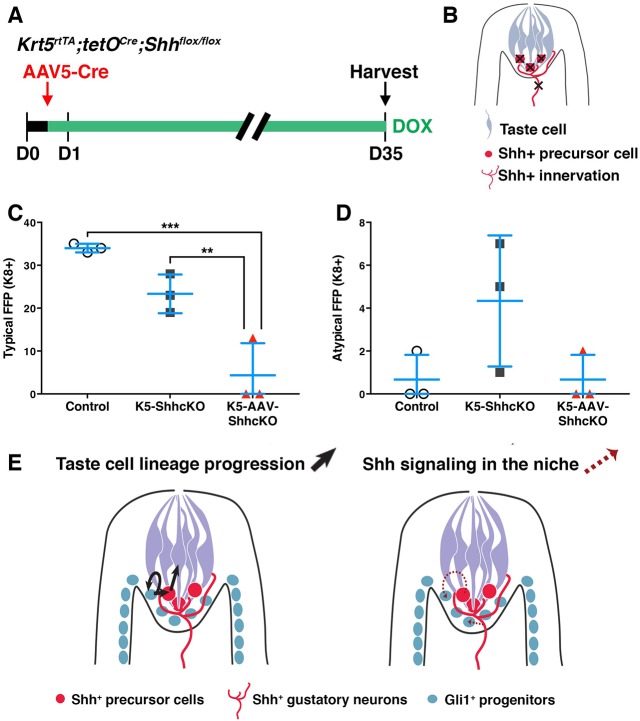Fig. 7.
Simultaneous deletion of Shh from tongue epithelium and sensory neurons abolishes taste buds. (A) Experimental design for concurrent neural and epithelial deletion of Shh. The NST of Krt5rtTA;tetOCre;Shhflox/flox (K5-ShhcKO) mice is injected with AAV5-Cre on day 0, and mice are fed dox for 35 days. (B) In K5-AAV-ShhcKO mice, Shh is deleted in both lingual epithelium and gustatory neurons (marked by crosses). (C) Typical FFP number is significantly decreased in K5-AAV-ShhcKOs compared with control and K5-ShhcKO mice. (D) Atypical FFP number does not vary significantly across conditions, although more are evident in K5-ShhcKO mice. n=3 mice per condition. Data are mean±s.d. One-way ANOVA (C,D); **P<0.01, ***P<0.001. (E) Model for the role of Shh in taste cell renewal. Taste cell lineage progression (black arrows, left panel): New taste cells are generated from self-renewing Gli1+ progenitors (blue), which exit the cell cycle, enter buds as Shh+ precursor cells (red) and differentiate as taste cells (gray). Shh signaling in the taste progenitor niche (red dashed arrows, right panel). The niche for Gli1+ progenitors comprise both gustatory neurons and taste precursor cells expressing Shh (red). Shh ligand promotes taste cell differentiation from these Shh-responsive progenitors.

